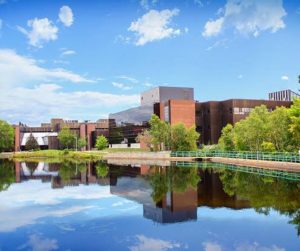Worst Universities in Kenya 2024: Top 8
Worst universities in kenya: Selecting a university is a significant choice that needs careful consideration in order to get the greatest fit for your learning objectives and professional aspirations. Kenyan university rankings are released annually, emphasising research and teaching among other things. These rankings are crucial in confirming the calibre of education given that millions of Kenyan university graduates do research, publish scientific articles, and graduate each year. Sadly, not every university provides the same quality of education and experience for students.
A number of Kenyan universities have a poor reputation because of a variety of issues, including graduation employability rates, student happiness, and academic standards.
Top 8 Worst Universities and Colleges in Kenya
These are Kenya’s worst universities:
1. Harvard Institute of Development Studies Thika: The main reason Thika has drawn notice and criticism is because of the intentional use of a name that is very similar to the highly regarded Harvard University, which is located in the United States. Not content to only raise eyebrows, this decision has generated a significant amount of discussion in academic circles over the institute’s intentions as well as the possibility of misunderstandings among prospective students and the wider public.

The bold choice of such a well-known name not only draws attention, but it also raises more general questions regarding the moral implications of naming practices in the higher education industry. It demands a more thorough examination of the institute’s dedication to academic integrity, openness, and its unique position in the educational system.
2. Mount Kenya University: Mount Kenya University is one of the biggest private institutions in Kenya, although it still faces difficulties getting some academic programmes accredited. Issues with accreditation have far-reaching consequences that go beyond simple administrative disputes; they undermine the institution’s reputation for academic integrity and the worth of the degrees it bestows.

This calls for a careful analysis of the university’s dedication to maintaining and raising the bar on established educational standards. In addition to protecting the university’s image, a thorough plan for handling accreditation issues is essential for maintaining the respect and confidence of parents, students, and the business sector. Fixing the problems that are currently there and putting strong systems in place for continuous quality control takes work.
3. Kisii University: Concerns over governance have been a prominent aspect of Kisii University’s story, ranging from financial management to administrative effectiveness. All facets of institutional functioning are impacted by the complexities of good governance, which have an impact on resource allocation, decision-making procedures, and overall operational effectiveness.

As such, the institution is at a turning point in its history when it is not just wise but also necessary to address governance challenges in a methodical and open manner. These initiatives will strengthen internal procedures while also demonstrating the institution’s dedication to openness, responsibility, and providing a top-notch education to its varied student community.
4. Great Lakes University of Kisumu: Reports exposing issues with insufficient infrastructure have clouded the Great Lakes University of Kisumu. The importance of infrastructure in the modern higher education environment goes beyond the physical world to include new learning spaces and technology resources.

As a result, the university’s commitment to establishing the best possible learning environment depends critically on a deliberate and ongoing infrastructural investment. Improving the academic experience, encouraging holistic student development, and establishing the institution as a centre for cutting-edge education all depend on addressing these infrastructural issues.
5. Kiriri Women’s University of Science and Technology: Due to its exclusive concentration on particular areas, Kiriri Women’s University of Science and Technology has come under criticism. Although specialization may be a distinguishing characteristic, it also presents a specific set of difficulties, especially in terms of widespread awareness.

The organisation must carefully navigate this unique junction of history and innovation to make sure that its specialized solutions meet the needs of the industry and the expectations of the market today. A plan that guarantees the university’s continued success and reputation in the ever-changing field of higher education must include strategic alliances, regular programme assessments, and flexibility in response to new developments.
6. Pioneer International University: In Kenya’s higher education scene, Pioneer International University has a unique place. It has faced difficulties that need for careful thought as it navigates its function as a learning institution. Discussion points have included programme relevance, faculty qualifications, and academic excellence.

It becomes critical to address these issues if the university is to continue growing and gaining prominence. An examination of the curriculum, efforts for faculty development, and business alliances might set Pioneer International University on the path to improved academic reputation and institutional life.
7. Daystar University: Daystar University, which is renowned for its dedication to academic quality and Christian principles, has encountered several noteworthy difficulties. The operational stability of the institution has been impacted by documented instances of faculty strikes and financial challenges. Maintaining the institution’s distinctive culture while tackling the day-to-day operations of organisational administration necessitates a careful balancing act.
In order to steer Daystar University in the direction of resilience and ongoing contribution to the education sector, it will be essential to maintain open lines of communication, promote financial sustainability, and provide a supportive academic atmosphere.
8. Masinde Muliro University of Science and Technology: Despite making a substantial contribution to the development of science and technology education, Masinde Muliro University of Science and Technology (MMUST) has encountered difficulties, such as sporadic disruptions brought on by industrial strikes and worries about the calibre of some programmes.

These difficulties highlight the more general complexity that educational institutions face while providing specialised training. In order to overcome these obstacles, MMUST will strategically prioritise programme improvement, ongoing faculty development, and preventative steps to lessen interruptions. MMUST’s standing as a major force in science and technology education in Kenya may be further enhanced by bolstering cooperation with business partners and investing in state-of-the-art research.